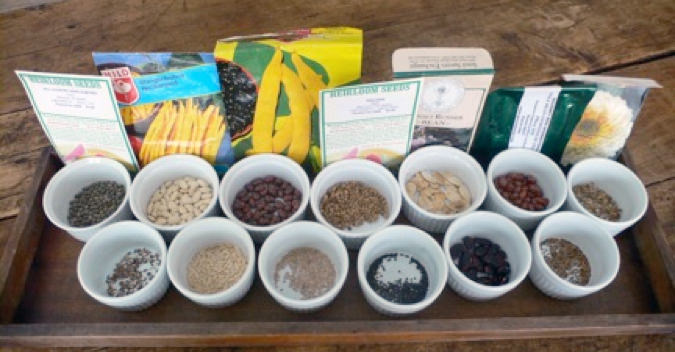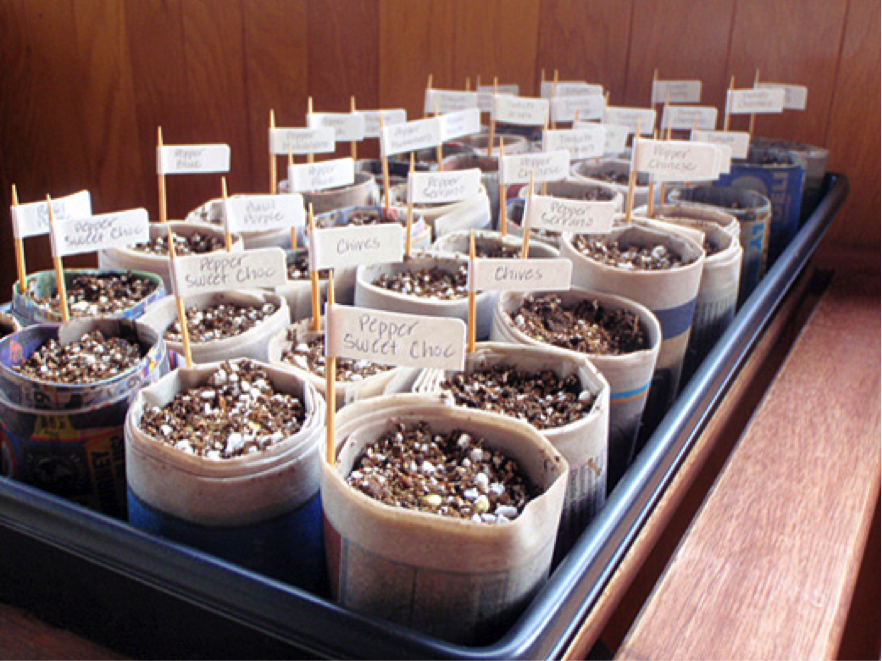Even though we just hit March, I’m already starting to think about gardening this year. Produce prices continue to climb and the drought in California this year is sure to adversely affect produce prices throughout the year.
While planting season in many regions of the country is still a few months away, starting seeds indoors can significantly increase your annual yields by creating more robust plants that are ready for harvest much sooner than crops planted outside during spring.

Many common fruits and vegetables can be purchased as seedlings and typically make gardening much easier; however, there are literally thousands of crop varieties rarely available as seedlings. Starting seeds indoors provide you with complete control of the growing environment. Your seeds do not need to compete with weeds, bad weather or animals.
Starting a garden indoors and transplanting outside in the spring gives your plants a head start. In some areas of the country, it is necessary to start crops indoors. Where I live, for instance, the high elevation can make life extremely difficult for seeds and seedlings so I normally start my garden indoors and transplant the crops outside when the weather breaks in May.
Not only does this technique provide my family with garden fresh vegetables much sooner, but it also allows me to grow crops (like spinach) that take a long time to germinate when planted directly into the ground.
How Germination Works
To truly understand the benefits of starting your seeds indoors this year, let’s take a quick look at the germination process.
All seeds contain specialized cells that start the growth process when triggered by proper amounts of moisture, temperature and light. The nutrients stored within the seed combine with moisture to create the plant root system, stems and eventually leaves.
While some crops such as cabbage and tomatoes germinate quickly because a fully formed embryo is contained within each seed, other crops, such as carrots, need additional time for the embryo to develop before they can sprout.
As I already mentioned, spinach is another tricky seed because the seed coat actually contains anti-growth compounds that have to be broken down in soil before the seed will grow roots and sprout.
Also keep in mind that seeds need oxygen within the soil to germinate because without leaves they are incapable of photosynthesis. By starting your seeds indoors, you have complete control of the oxygen content of the potting soil used and the success rate of your seeds improves exponentially.
The Best Way to Start Seeds Indoors
A quick stroll through the garden center will yield hundreds of options for starting seeds indoors. Fancy trays with translucent dome tops are relatively inexpensive and may seem like a good idea; however, I have found that one of the easiest and most effective ways to start inside is using small paper cups.
They are inexpensive and by punching a few holes in the bottom they provide plenty of drainage during the germination process.
Another advantage to using paper cups is they work well in your compost pile after you have transplanted the seeds and there is absolutely zero risk of shocking the plant when the roots hit the walls of the paper cup (unlike peat pots).
Some people have also had success making their own pots from rolled pieces of newspaper. As most of us know, newspaper makes an excellent compost additive and represent a sustainable way to start seeds indoors and easily transplant them to the garden later.

Light is another concern during the germination process because once the seeds break the surface they will twist and turn looking for adequate lighting. I’m fortunate enough to have large bay windows that face south so additional lighting is not required for my seedling stems to grow straight and strong. That said, many experts think that seedlings should be exposed to about 18 hours of lighting and I may try adding a couple of florescent ballasts above my windowsill this year.
If you are not as fortunate, you may have to move your seedlings into different areas throughout the day to provide even lighting or at least rotate them to promote even growth. You can also consider commercial grow lights; however, these are often expensive and can seriously tax your electrical system.
Remember that since seedlings do not rely heavily on photosynthesis, they do not need direct, intense light throughout the day. In fact, many people have successfully germinated seeds indoors using common florescent lights on a timer. Shop lights also work well for short-term indoor growing needs.
The growing medium you choose is extremely important when starting seeds indoors. Remember that seeds need oxygenated soil to grow so always try to use a light and airy potting soil when starting your seeds. This promotes healthy root establishment and faster germination times for most plants.
Common Seed Starting Mistakes
While there are quite a few ways to start seeds successfully indoors, there are also quite a few ways to mess up the indoor germination process.
One of the most common is overwatering. Your seeds should be planted right at the surface of your potting substrate and excessive water promotes the growth of bacteria and fungi that will compete directly with your seeds.
A good way to tell if you are overwatering is to take a small amount of the potting soil in your fingers and squeeze. If any water drips out or if the soil stays stuck together after squeezing, you have added too much water.
Another common mistake is not providing enough sunlight. While south facing windows typically work well, most gardening experts agree that seeds/seedlings should be exposed to 12 – 18 hours of sunlight each day. This is why adding grow lights on a timer can really help to strengthen your plants during this vulnerable time in their lives.
If your seedlings are too cold, roots will not grow as well. Even though cool temperatures on the soil surface encourage compact growth, your plants’ roots need warmth to thrive. Depending on your climate and how cool it is in your home, you may need to add a seedling heat mat underneath the plants to encourage healthy root growth.
Finally, it’s always a good idea to start more seeds then you actually intend to plant. While indoor germination rates are much higher than sowing seeds outside directly, planting more than you need allows you to pick and choose the strongest looking plants for transplantation to your outdoor garden. Weak-stemmed and otherwise unhealthy looking plants can be discarded in the compost pile while healthy specimens can be prepared for transplant.
If you have never attempted to start seeds indoors, you might be surprised by the improved results. It is a technique that is essential in areas of high elevation, regions where surprise late frosts can kill an entire crop or areas where summertime temperatures can become too intense for many species.
Starting indoors allows you to harvest healthy, organic produce from your own garden much faster while generally increasing the annual yield of each plant. Especially if you use paper cups or rolled newspaper to plant your seeds, there is not much upfront cost involved in starting seeds indoors and it represents a truly sustainable practice that can improve the quality of our food each and every year.


